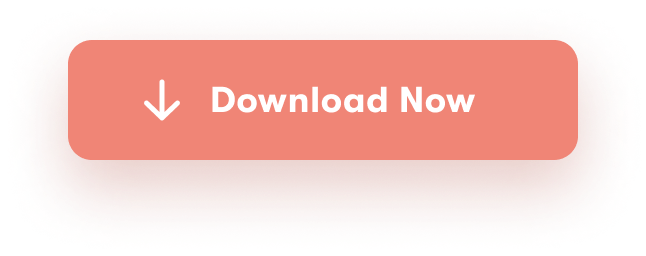 “I hope you live a life you’re proud of. If you find that you are not, I hope you have the strength to start all over again.” ~F. Scott Fitzgerald Not too long ago, I had the worst week of my life. Let me give you some background. Just over a year ago, I was diagnosed with a meningioma—a benign brain tumor. “It’s small,” I was told. “It won’t cause you any issues, at least not for several years.” Fast forward to May 18, 2017. “It has grown. We need to start considering surgery or radiation.” Whoa. Major brain surgery or radiation to my brain? What a fun way to spend my summer. Then, on May 19, 2017, I walked in to work. I was ushered into a meeting. “Your position is being eliminated,” I was told. Hey, life! Way to kick me when I’m down! I spent much of that morning crying. I reached out to family and friends, updating them on my news, all while eating cookies from my favorite coffee shop and gulping down a McDonald’s large Diet Coke. In fact, I spent much of the next two weeks in the same manner. Now I am sitting here, on my laptop, contemplating the significance of all of this, happening at once.
“I hope you live a life you’re proud of. If you find that you are not, I hope you have the strength to start all over again.” ~F. Scott Fitzgerald Not too long ago, I had the worst week of my life. Let me give you some background. Just over a year ago, I was diagnosed with a meningioma—a benign brain tumor. “It’s small,” I was told. “It won’t cause you any issues, at least not for several years.” Fast forward to May 18, 2017. “It has grown. We need to start considering surgery or radiation.” Whoa. Major brain surgery or radiation to my brain? What a fun way to spend my summer. Then, on May 19, 2017, I walked in to work. I was ushered into a meeting. “Your position is being eliminated,” I was told. Hey, life! Way to kick me when I’m down! I spent much of that morning crying. I reached out to family and friends, updating them on my news, all while eating cookies from my favorite coffee shop and gulping down a McDonald’s large Diet Coke. In fact, I spent much of the next two weeks in the same manner. Now I am sitting here, on my laptop, contemplating the significance of all of this, happening at once.
If I’m going to be honest, I have been in a downward slump for the past year. My migraines have gotten out of control. I have gained about twenty pounds because I can’t control my stress eating. My anxiety? Whoa—it requires a couple of medications to control it, and I still see a therapist weekly (who is awesome, I should add).
Suffice it to say, on May 19th, that morning, that moment, I hit rock bottom.
I am going to go out on a limb and say that we’ve all hit the proverbial rock bottom before. In fact, I would bet that some of you, dear readers, are sitting there right now, trying to figure out how to claw your way out.
Up until the end of June, I was there too. I was sitting there, at the bottom of a hole.
I realized I could sit there, cry, continue eating cookies, letting the weight pile on, and be unhappy. I could let my physician’s pile on more medications for my anxiety and my migraines. Or, I could envision everything I am going through as the beginning of something much bigger.
Something bigger. Freelance writing is my secondary income. I am in the midst of yoga teacher training. I am a certified diabetes educator and an RN. I have all of these skills; the question is, what should I do with them?
I have had the same best friend since we were twelve—well over half of our lives. When I texted her that I lost my job, she called me within the hour. “It’s hard to see it now,” she said, “but this just means that job wasn’t right for you. Something bigger is meant for you.”
When I think about the last year of my life, I think about how much I loved my job. But I also think about how poor my health has been because of my own actions. I think about how my anxiety has affected my family.
Although it is hard to see it right now, I am in a unique position. I get to start all over again. I get to figure out what I really want to do. What else do I know? This life I’ve lived for the past year. It isn’t working for me. I have been miserable. Health crises and job loss are traumatic, but for me, they may have been the figurative kick in the ass to see that I am on a precipice—all I have to do is jump.
So, dear readers, if you are also at the proverbial rock bottom, here’s my best advice at crawling your way out, coming from someone who was literally right there.
Step 1: Finish wallowing, then take an assessment.
You read that right—I just told you to finish wallowing! Why? Because if you’re not done grieving whatever situation kicked you into your hole—whether it be a major breakup, a health crisis, a job loss, or a death of a loved one—you’re not really ready to pull yourself out. All of these big life issues? They’re huge. They’re astronomical. They’re so large that they put your life into a tailspin. You need to properly grieve the loss of your past life before you can move forward. I am not an expert at grieving. If you need help, please seek it. And don’t be ashamed to seek help. Remember how I mentioned that I see a therapist weekly? I am unashamed.
Once you’re done grieving, take a long, hard look at your life. What caused you to sink into your hole? Where were you before you hit rock bottom? Most importantly, where do you want to go from here?
I want to add that this phase is hard. I mentioned that you need to finish wallowing. This means stay there as long as you need to, because you need to get over it before you can move on. However, have you ever heard the saying, “It’s okay to have a meltdown, but don’t unpack your bags and stay there”? This is step 1—don’t get stuck in regret and forget to move forward.
Step 2: Start planning.
My life changed dramatically one month ago. I by no means have my plans figured out yet. I have a vague idea of where I want to go from here, but it is still in the air, so to speak. And that’s okay. The important thing is that, after you’ve begun to desperately claw yourself out of the pit, you begin to make a plan. For example, as both a writer and an RN, I am making plans to use both of my talents. I know, after ten years of nursing and working for a hospital that ultimately let me go, I don’t want to work in that capacity anymore. I am not entirely sure what this means, but I do know that I still want to use my credentials as a diabetes educator. I want to somehow work as an RN. I also want to be a writer. That’s all I know so far.
My main focus, of course, is being healthy. With my surgery coming up quickly, I am focusing my energy on my health and subsequently my recovery. Once I have recovered from my meningioma removal surgery, I will start all over again.
It is important to note when you are planning, your goals don’t have to be huge. My goals are huge because what I am going through is pretty big. Even if your goals are huge, the steps that you take can be small—the important thing is that you are making a plan. And another thing! Write that plan down. Tape it to your bathroom mirror, your kitchen cabinet, or the steering wheel of your car—somewhere that you’ll see it and read it over, and over, and over.
Step 3: Put your plan into action.
Planning is great. But a plan is only great if you actually do something with it. The day I hit rock bottom, I actually started writing this article, thinking it would be published immediately. “It’s so great!” I thought. Yes, but I hadn’t actually dragged myself out of the hole yet. I had basically written my narrative, but there was not a lot else about how I planned to dig my way out, so needless to say, it was turned down nicely. Because I had no clue.
I spent the next couple weeks grieving. Then, I realized, I was done with grieving. I will always be just a little bit sad about losing my job, because I genuinely loved it. But I can’t grieve forever. And my brain tumor? Well, I just got back from Mayo Clinic and will have it removed in several weeks, and with any luck, it will never grow back.
Am I scared? Sure. I’m scared to lose another job. I’m scared of brain surgery. I’m scared that the tumor will grow back. But I am also grateful. I am a creative person by nature—I can barely draw a stick figure, but I love to write; had I not lost my job, perhaps I would never have been given this opportunity to use this creative skill. I am grateful that my tumor is benign. It is easily operable. I will have an easy recovery. I have an amazing support system in my husband, my friends, and my family.
After I realized these things, I started putting my plan into action. I started writing more—for my clients, for myself. I have slowly begun to apply for nursing and diabetes educator jobs that interest me, although I will be unable to start until after surgery. I am working to complete my 200-hour yoga teacher training.
—
Whatever thing you’re going through, that caused you to hit rock bottom? It sucks. I know it does. No one hits rock bottom without a reason. But don’t stay there. I know it’s going to take us a while, but I also know it’s better out of the hole. We’ll get there, I promise.
![]() Krysti Ostermeyer blogs at https://krystiwithak.wordpress.com/, where she writes about migraines and her son’s food allergies. She is a nurse, a diabetes educator and a yoga enthusiast. This post was republished with permission from tinybuddha.com. You can find the original post here
Krysti Ostermeyer blogs at https://krystiwithak.wordpress.com/, where she writes about migraines and her son’s food allergies. She is a nurse, a diabetes educator and a yoga enthusiast. This post was republished with permission from tinybuddha.com. You can find the original post here





